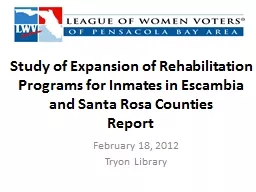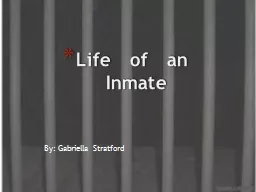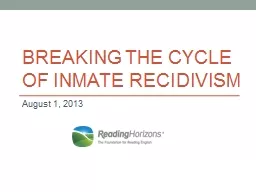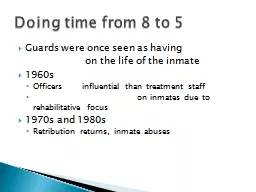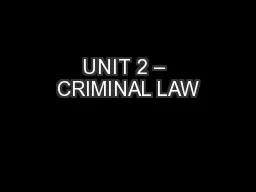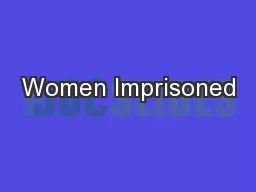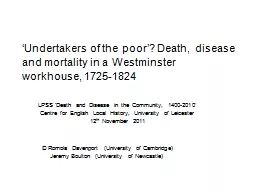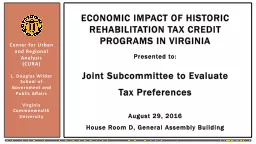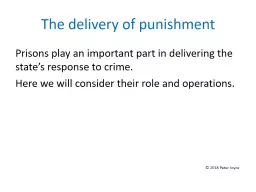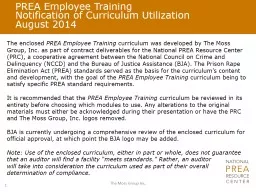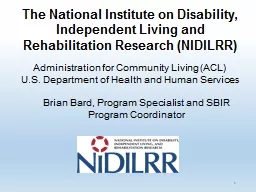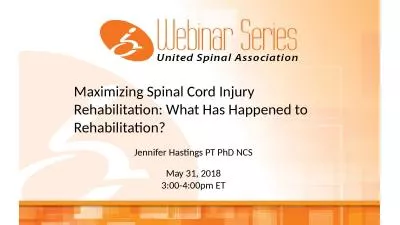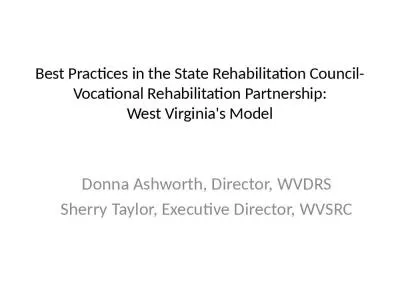PPT-Study of Expansion of Rehabilitation Programs for Inmates i
Author : stefany-barnette | Published Date : 2016-05-13
Report February 18 2012 Tryon Library The Problem The Study Rehabilitation Programs State County Community Report Conclusion 23 million prisoners the United States
Presentation Embed Code
Download Presentation
Download Presentation The PPT/PDF document "Study of Expansion of Rehabilitation Pro..." is the property of its rightful owner. Permission is granted to download and print the materials on this website for personal, non-commercial use only, and to display it on your personal computer provided you do not modify the materials and that you retain all copyright notices contained in the materials. By downloading content from our website, you accept the terms of this agreement.
Study of Expansion of Rehabilitation Programs for Inmates i: Transcript
Download Rules Of Document
"Study of Expansion of Rehabilitation Programs for Inmates i"The content belongs to its owner. You may download and print it for personal use, without modification, and keep all copyright notices. By downloading, you agree to these terms.
Related Documents

